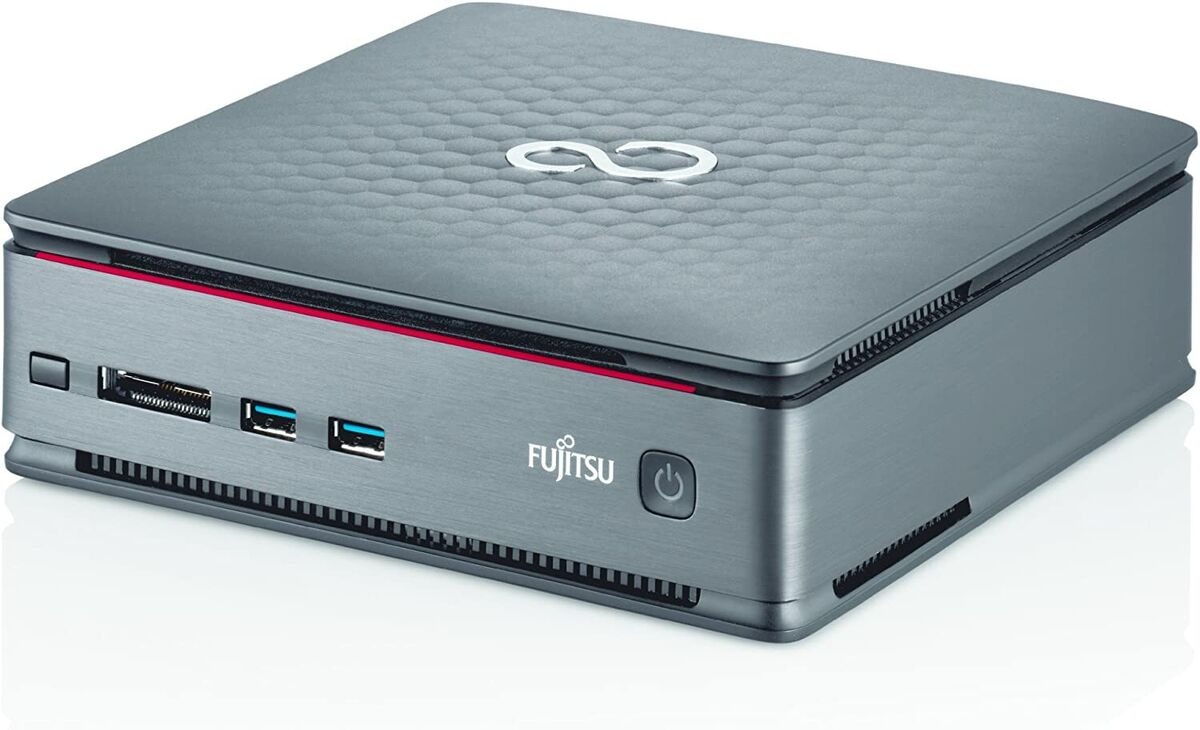The smallest desktop computer you can buy can fit in a large pocket, being less than 5 inches in any direction.
Why It’s Smart To Buy a Small Desktop Computer
Size is obviously an important factor for shoppers who want to buy the smallest desktop computer (or one of the smallest). There are plenty of reasons to go small.
Size-wise, a small desktop PC can save precious space in a home office, dorm room, business space, mall kiosk, or living room. You can easily bring your computer along on business flights, subway trips, and car commutes in a way that is not possible with traditional PCs or even laptops.
If you have ever hauled around a laptop bag (along with other luggage) through a busy airport or city for hours, you understand it does not take much to feel burdened. Meanwhile, you can pop a mini PC in your pocket, purse, or suitcase and barely notice it’s there.
Small computers are typically quieter and more power-efficient than their larger counterparts. You do not have to sacrifice features. Extremely high-end gaming is a possible area of concern if you are among the top 1% of gamers and need the most intensive machines. In most cases, though, getting one of the newer small computers and customizing its capabilities should get you where you need to be gaming-wise.
You can do work and school projects, word processing, spreadsheets, email, social media, movie streaming, and even light video editing on most mini PCs out of the box.
How To Choose the Smallest Desktop Computer That Fits Your Needs
When you shop for a computer, consider factors such as memory, processor, ports, storage, and price. Not surprisingly, the more recent computers with higher capabilities cost more. However, a computer a couple of years old can deliver excellent performance at a great price.

As for ports, you want at least two ports that connect to monitors. Look for HDMI, DisplayPort, and USB-C ports. Any two of these three work for most situations.
Memory is probably not an issue if you intend to use the computer for everyday tasks and not, say, heavy video editing or intensive gaming. At a bare minimum, choose a PC with at least 8 GB of random access memory for everyday tasks.
If you decide down the road you want more memory, you can upgrade then. Check the maximum capabilities when you buy a PC. For example, some max out at 32 GB of RAM, while others have the potential for 64 GB.
For processors, Core i3 or Celeron should suffice for everyday tasks. PCs to use for media servers, heavy gaming, or video editing require more processing capabilities. Solid-state drives storage is great in most situations, but hard disk drives offer more space. An SSD is speedier, though.
The Smallest Desktop Computer You Can Purchase
No doubt, the dimensions of the smallest desktop computer you can buy will continue to get smaller. One day, today’s desktops may even be the size of your pinkie fingernail or even no larger than a few grains of sand. Those ultra-micro days are not quite here, yet.
What is here now, though, are machines you can conveniently fit in your pocket or purse. Browse the extensive selection of minicomputers at GEEKOM today.
